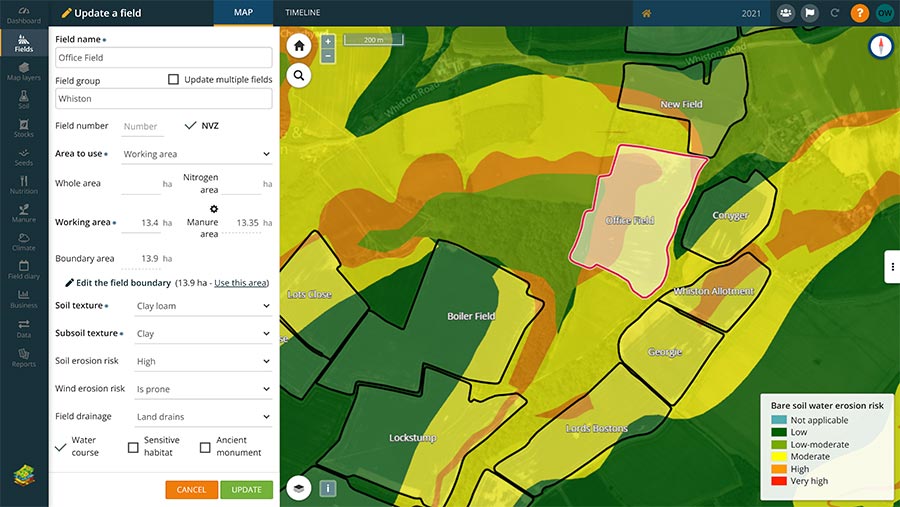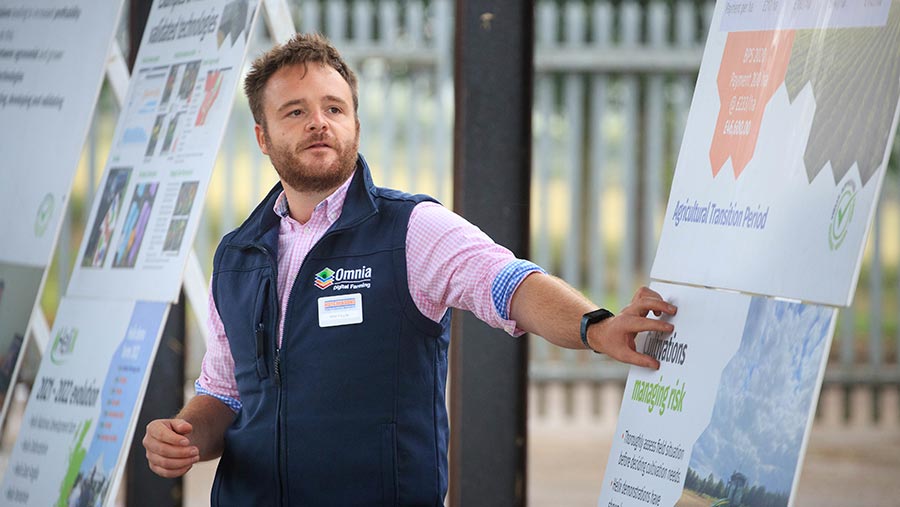How farmers can benefit from new rotation planning tool
 © Omnia
© Omnia The launch of a new farm rotation planning tool is set to benefit users by costing out a range of potential cropping and machinery scenarios.
The Business Performance module developed by Omnia Digital Farming offers an industry first for full-farm rotational planning, helping farmers to take the guesswork out of decision-making.
The development uses individual farm data to financially assess a range of potential cropping and machinery scenarios, and displays the results visually.
Whether it’s planning a crop rotation or choosing cultivation type, users are provided with the necessary information to make informed choices in terms of financial performance and emissions measured in carbon dioxide equivalent (CO2e).
See also: Harvest 2022: The 5 top-yielding spring barley varieties map
The development of the Business Performance module follows on from the 2021 launch of the firm’s Field Performance module, which provides the ability to retrospectively calculate the cost of production of field operations in £/t, CO2e/t and CO2e/ha.
Omnia’s Oliver Wood explains that the digital platform is an industry first and there is currently no other toolset like this. “This will be a real benefit for farmers, allowing them to create a digital version of an entire cropping rotation on their farm,” he says.
“Ultimately people make decisions based on their bottom line and net margin, but more so within the industry carbon dioxide emissions are becoming more important. This platform opens the door to farmers to assess which practice is best for their farm and to help reduce emissions.”
How it works
As with all developments within Omnia, the data is visualised through several layers or maps, making it straightforward and user-friendly.
For each crop it is possible to include variable costs and operations, or use those already defined in the “virtual machinery shed” within the Field Performance module, and then add in the rotation.
Income, variable costs, gross margin, fixed costs, net margin and carbon dioxide equivalent are calculated per hectare, as well as over the year. Furthermore, a range of cropping or machinery scenarios can be run alongside each other for easy comparison.
Cultivation example
Will Foyle, a farm business consultant at agronomist Hutchinsons, gives the example of using the performance module to look at the implications of moving from a tillage-type disc drill to a direct drill across a five-year rotation.
By inputting income, variable costs, gross margin and fixed costs into the program, one scenario reveals that using a direct drill will lower fixed costs from 27% to 22% as a percentage of output, while CO2e emissions are also reduced.

Will Foyle © Hutchinsons
This is despite income, variable costs and gross margin remaining the same over the year.
What is really noticeable, highlights Mr Foyle, is that net margin increases by a significant £83/ha or £25,908/year.
Another scenario could be to assume crop rotation and output remains the same, but with different yield penalties applied.
“It’s possible to use the module to cost out any range of scenarios in terms of pounds and carbon, before implementing them on farm,” says Mr Foyle. “This really is an invaluable exercise for any grower to undertake before making changes to current farm rotations or machinery to make the right decisions in what is currently a confusing picture.”
The rotation platform tool is available to anyone, and users do not need to be a Hutchinsons customer.
Why is this so significant?
UK agriculture is under increasing pressure to manage output at a time when costs are soaring and pressure to reduce emissions is growing.
The economics of different crops are changing rapidly as market prices fluctuate and the response to fertiliser requirements change.
There is currently a greater demand for oilseeds, which means rotations are being analysed more closely.
Will Foyle at Hutchinsons says: “This comes at a time when subsidies are reducing and there is a closer focus on increasing costs.
“Currently demand for land use is strong, such as for short-term lets for roots, vegetables, maize and rye. Opportunities for third-party payments from water companies to fund cover cropping, the emergence of biodiversity net gain markets, and the impact of carbon are all contributing to changes in cropping that need to be assessed.”

